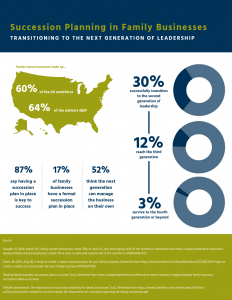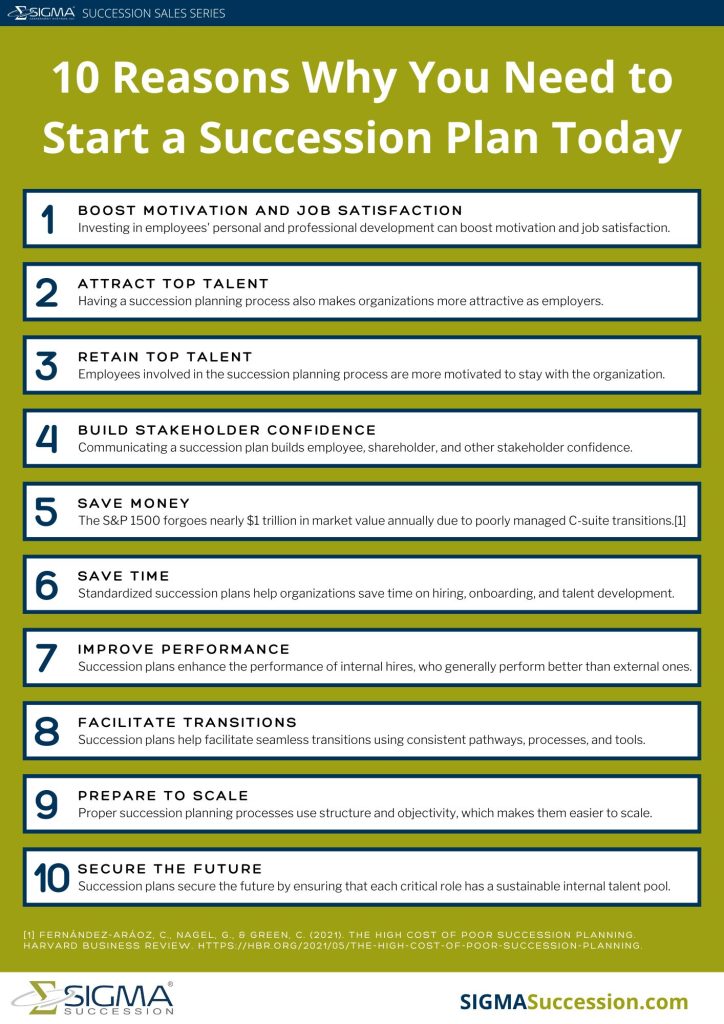Succession Planning in Family Businesses
Transitioning to the Next Generation of Leadership in Family Businesses
Family businesses are faced with a number of unique challenges and succession planning is no exception. Conversations around the next generation of leadership are inherently more complicated and emotional due to family dynamics, individual expectations, and financial concerns. What’s more, leaders tend to underestimate the amount of time the succession process takes. When surveyed, many indicated they thought the succession planning process would take two years or less, while experts suggest it is more likely to be five or even ten years for some companies[1]. So what can these organizations do to more successfully navigate this transition in leadership?
Family-operated businesses are faced with a number of unique challenges, and succession planning is no different. Conversations around who should take over as the next generation of leadership are inherently more complicated and emotional for a number of reasons. Family dynamics, financial concerns, and having to manage expectations are all things to consider when succession planning in a family business. Unfortunately, the statistics around succession planning in a family business aren’t great. An estimated 30% of family businesses successfully transitioned to the second generation of leadership, with only 12% reaching the third generation. What’s more, is we know that leaders have a tendency to underestimate the amount of time that this transition process takes. When asked, leaders often expect a smooth transition of power to take two years or less. In reality, experts suggest it’s more likely to be 5 or even 10 years before some companies are ready to hand over the reins. With only 17% of family businesses having a formal succession plan in place, there is certainly more that can be done to ensure the survival of these companies.
Today, we’ll talk about four things you can do to begin the process of transitioning your business to the next generation of leadership. It can sometimes be difficult, but the first thing you should do when creating a succession plan within your family business is to sit down with family members and have a candid conversation. It’s important to have a clear sense of who is interested in being a part of the organization and who isn’t. This isn’t something you want to make assumptions about. Once you have a clear idea of who is interested in taking on a role within the business, it can be helpful to provide some structure around a path for onboarding them into the organization. For some companies, this means having family members work at multiple levels of the organization before moving into a more senior role. Having young family members exposed to business in high school, via an entry-level position, can help them learn about the organization from the ground up, gaining knowledge and experience that can be incredibly valuable in making decisions as a senior executive.
You may also want to consider whether or not you will require family numbers to get experience elsewhere before joining your team at a senior level. There are valuable experiences to be gained by working for another company. And doing so can provide family members with the opportunity to build their professional reputation without relying on family connections. Having a plan in place for onboarding family members is important, but it’s not sufficient for ensuring a successful transition of power from one generation to the next. Adding structure and accountability by having a formal succession plan in place is key. One of the biggest mistakes family businesses can make when planning for the future is setting the expectation that senior positions will continue to be filled by family members. These positions should always be earned. There should never be the sense that family members are guaranteed an inherited role. Doing so is likely to alienate your non-family employees, making it difficult for you to attract and retain high-quality employees. However, bringing in an external consultant can help to add some objectivity to your succession process, which is likely to increase perceptions of fairness or on how personnel decisions are made.
The last step in handing over control to the next generation is respecting the process. This means taking a step back when the time comes and letting new leadership take over. It can be difficult letting go of an organization where you’ve spent most of your career, or perhaps even built from the ground up. But if you’ve taken the steps over the past several years to gradually make this transition, you can leave confident that your successor has the skills and expertise necessary to successfully move the organization into this next phase.
If you’re looking for help getting started with succession planning in your organization, visit sigmasuccession.com. There, you’ll find a list of our various consulting services, including our launch series and other offerings.
How to Start the Family Business Succession Planning Process?
1. Have a Candid Conversation About the Future of the Company
A lot of uncertainty and confusion can arise from the assumptions that when family dynamics mix with business operations. As such, the first step to developing a robust succession plan for your family business should be to sit down and have a candid conversation with family members. It’s important to have a clear sense of who would like to be a part of the organization, and who would not.
It is also important that everyone have a mutual understanding of the core values and vision of the organization. Working with family is rarely easy, and some degree of conflict is bound to arise. A core set of values that everyone agrees on can help guide you through these challenges. Remember that any decision your company makes should be in support of its values and mission. That way, even if there are disagreements in style and process, all family members will be working in the same direction towards shared goals.
2. Put a Talent Development Plan in Place
Once you have a sense of who is interested in taking on a critical role within the business, it can be helpful to provide some structure around a path for onboarding into the organization. This process can help to clarify the expectations for each family member who joins the company. Some companies find success having family members work at multiple levels within the organization before taking on a more senior role. This can mean working in an entry-level position while in high school and taking time to learn about a variety of departments. This approach helps young family members to learn about the organization from the ground up – knowledge and experiences that can be incredibly valuable when making important decisions as a senior executive.
Another important option to consider is whether or not you will require family members to get experience elsewhere before joining your team at a senior level. There are many valuable experiences to gain from working in another organization. For family members, it provides them an opportunity to build a professional reputation on their own, without relying on family connections. This can help to boost confidence in one’s own abilities. For the organization more broadly, having key team members gain experience elsewhere helps to bring a diversity of perspectives to your leadership team.

3. Formalize the Succession Process
Having a talent development plan in place for onboarding family members into the organization is important, but it is not sufficient for ensuring a successful transition of power from one generation to the next. Adding structure and accountability to this plan by having a formal Succession Plan in place is key. A formal Succession Plan allows you to track the progress of individual family members throughout the organization, but perhaps more importantly, it communicates your plan for the future across the organization.
One of the biggest mistakes family businesses can make when planning for the future is setting the expectations that senior positions will continue to be filled by family members. To avoid alienating employees, these positions should always be earned – there should never be the sense that family members are guaranteed an inherited role. Having a Succession Plan in place which takes into account non-family members is essential for attracting and retaining high-quality employees. Bringing in an external succession planning consultant to help with the development of your Succession Plan is a great way to add some objectivity to this process, thereby increasing the perceptions of fairness around how you make personnel decisions.
4. Respect the Transition of Power
The last step in handing over control to the next generation is respecting the process. This means taking a step back when necessary, and letting the new leadership take over. It can be difficult for some to let go of an organization where they have spent most their career, or perhaps even built from the ground up. If you have followed the steps of a formal Succession Plan, and spent the past several years gradually making this transition, you can leave confident that your successor has the skills and expertise necessary to move the organization into this next phase.
Ready to Get Started?

Download Infographic: Ten Reasons Why You Need to Start a Succession Plan Today
At SIGMA, we offer customized Succession Planning solutions to meet the unique needs of our clients. Contact us to learn more about how your company can get started today with our Succession Planning Launch Series.
[1] “How to start your family business succession planning” (n.d). Retrieved from https://www.bdc.ca/en/articles-tools/change-ownership/plan-succession/pages/family-business-succession-overcoming-barriers.aspx
